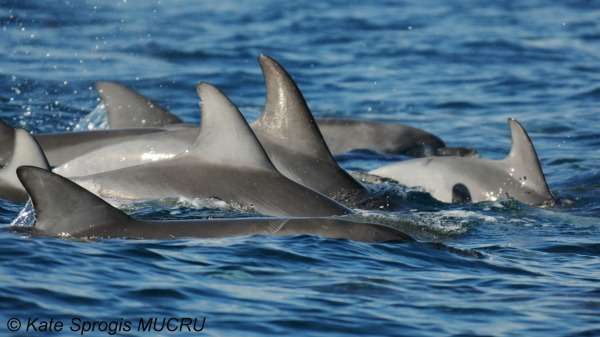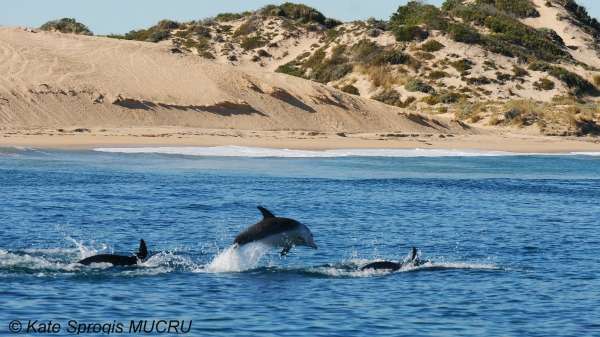Bunbury dolphins face foreshore developements

Bunbury dolphins are at risk of increased underwater noise levels and vessel disturbance, with proposed works to the Koombana Bay area.
Recent research has found that most of Bunbury's resident dolphins are unlikely to travel farther offshore to avoid the adverse impacts of planned boat pens at the Bunbury foreshore and a coal berth at Koombana Bay.
To better understand the home ranges of adult dolphins, the study investigated whether male and female dolphins inhabited different sized areas, and why, by surveying and photographing dolphins between Busselton, Back Beach, Buffalo Beach and Koombana Bay waters.
They found that both male and female dolphins who used sheltered waters—such as Koombana Bay, Leschenault Estaury and the Collie River area—generally had a smaller home range than any of the dolphins surveyed along coastal beaches.
Adult females were also found to have a smaller home range, with some measuring just 20sqkm, in order to minimise predation and maximise their food sources.
"Their distribution and use of space is driven by resources that enhance calf survival, such as prey availability and predation risk," Murdoch Cetacean Research Unit researcher Kate Sprogis says.
"In the estuary they have a good source of prey and it is high quality so they don't really need to go into larger home ranges."

In contrast, males' use of their home ranges is heavily driven by the distribution of receptive females, allowing them to reproduce with as many females as possible and be more reproductively successful.
"What they're concerned about is their success as a male and their ability to monopolise females," Dr Sprogis says.
The plans for boat pens at the Bunbury foreshore and for a coal berth at Koombana Bay are still subject to State Government approval and funding.
Dr Sprogis says going ahead with an increase in human activities such as coastal development and vessel usage in Koombana Bay could result in adverse impacts to resident dolphins, including an increase in vessel disturbance and underwater noise levels.
"The females there have quite small home ranges and they're the ones that are going to be impacted because they also have the tourism and the recreational boating to contend with."
Provided by Science Network WA
This article first appeared on ScienceNetwork Western Australia a science news website based at Scitech.





















